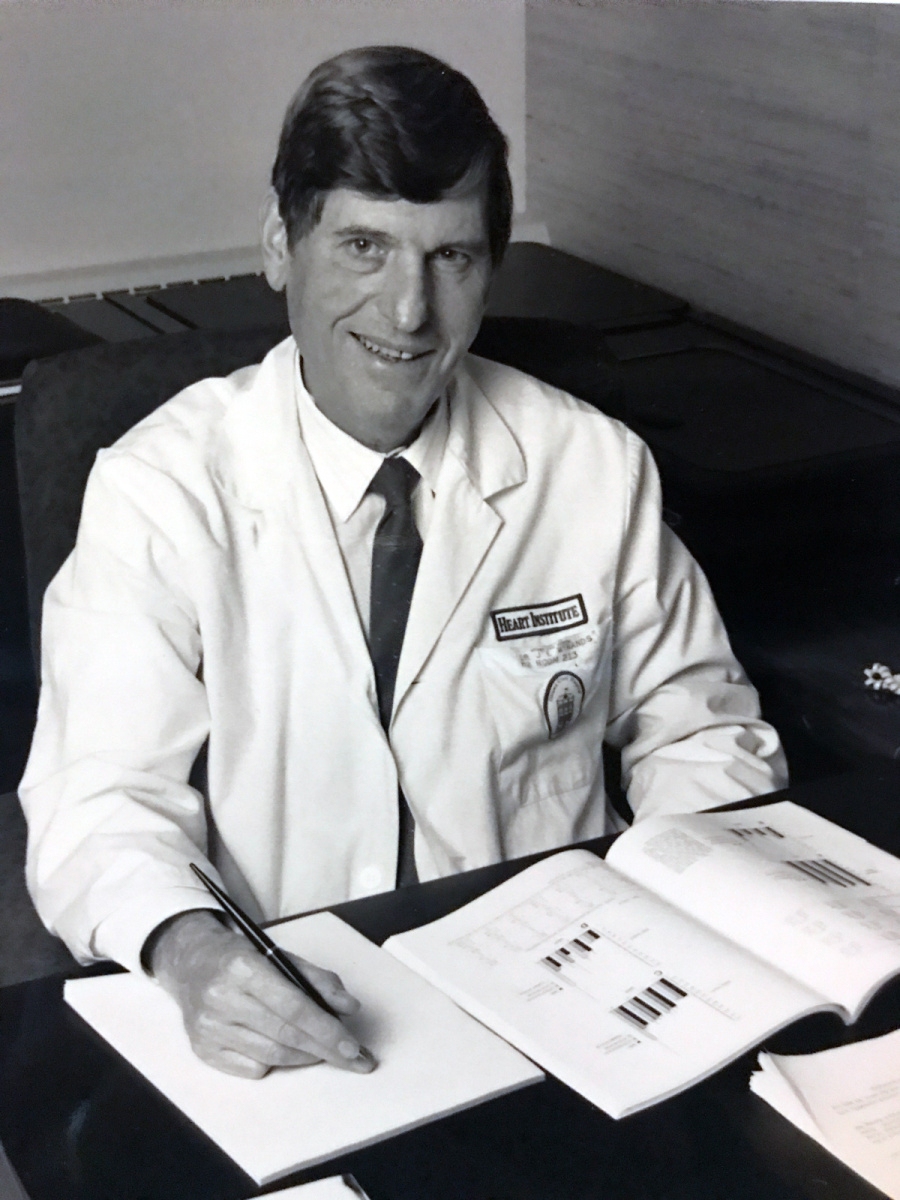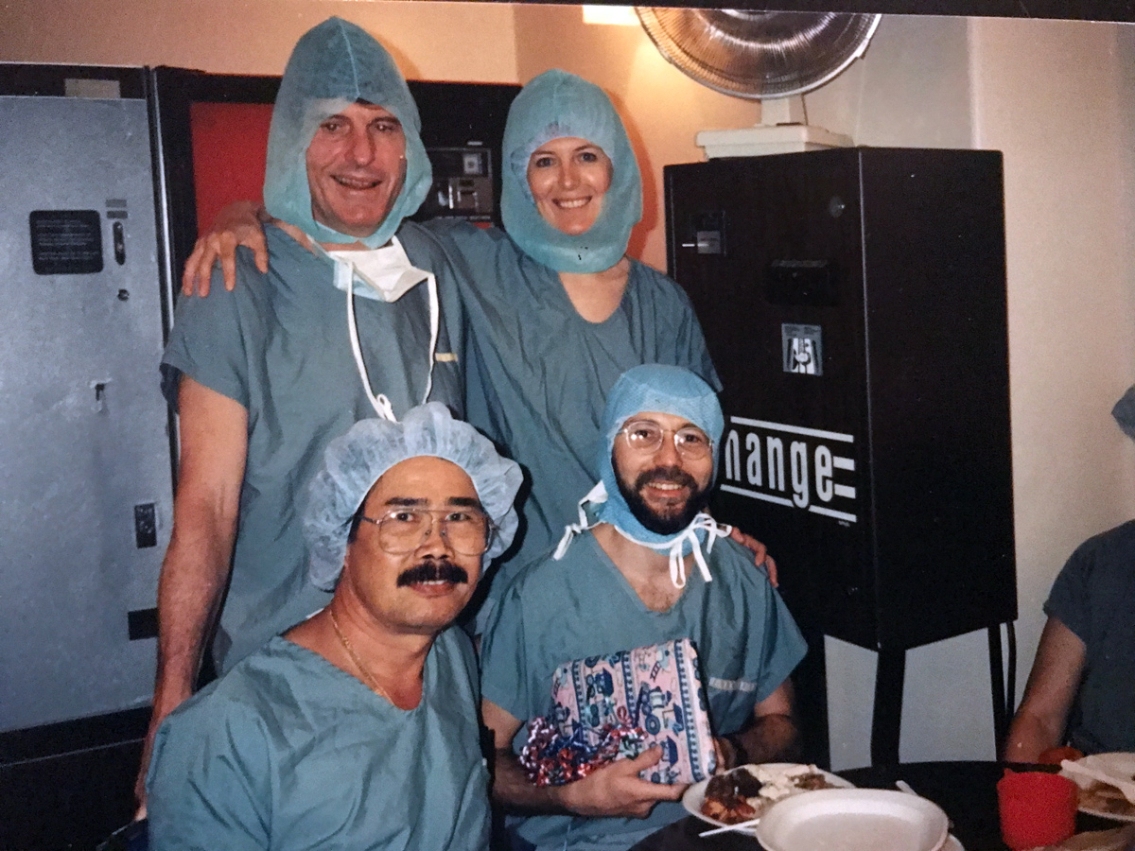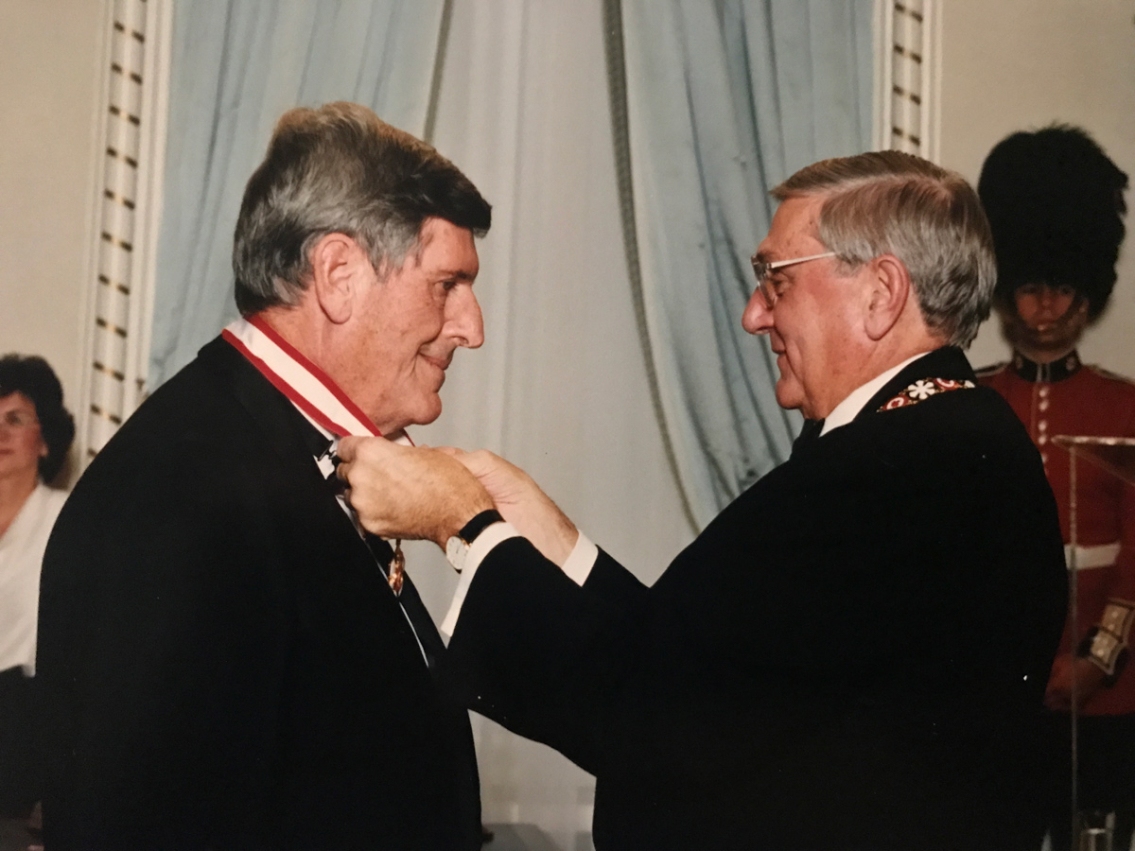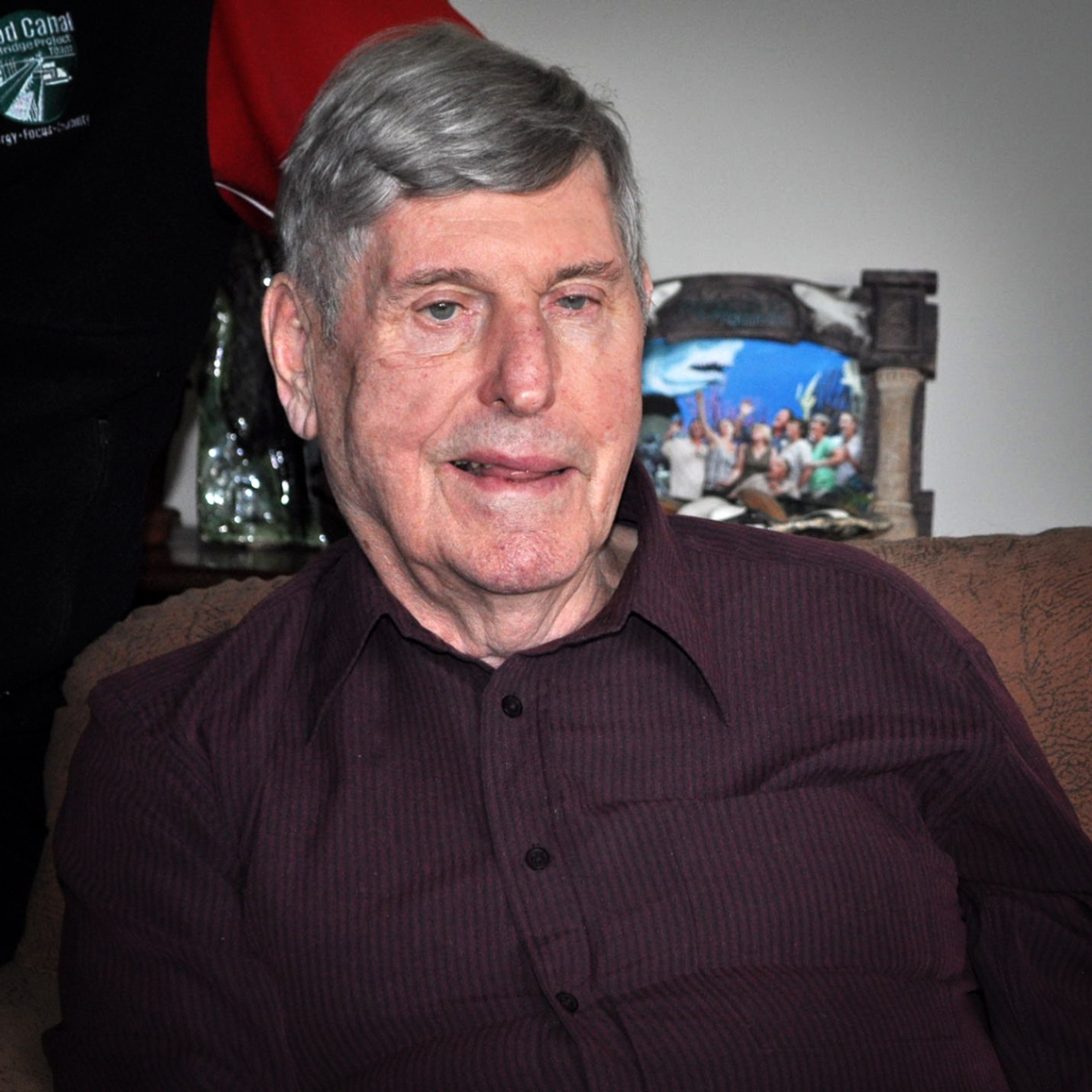The University of Ottawa Heart Institute (UOHI) and the UOHI Foundation have established a $1M research chair to improve care and experiences for hundreds of thousands of patients who require life-saving heart surgeries and procedures each year.
The J. Earl Wynands Associate Chair in Cardiac Anesthesiology Research is named in honour of the Canadian pioneer within the cardiac subspecialty of anesthesiology. Bernard McDonald, MD, who took over as head of the Heart Institute’s Division of Cardiac Anesthesiology in December 2021, will serve as the first chairholder.
“Investments in research strengthen our capacity to contribute to cutting-edge advancements in cardiac anesthesiology while continuing to allow our members to provide world-class care to patients with heart disease,” said Dr. McDonald. “Our goal is to attract a dedicated person whose priority within the division is to focus on clinical research while engaging and inspiring other members of the team.”
A storied history
Wilbert J. Keon, MD, founded the Heart Institute in 1976 as a standalone facility north of the Ottawa Civic Hospital. The facility housed operating rooms, catheterization laboratories, a cardiac surgical intensive care unit, a recovery room, and a coronary care unit on a single floor.
At that time, the concept of subspecialty expertise in cardiac anesthesiology was still in its infancy. The anesthesiologists who worked in the facility had a mixed practice, splitting cardiac anesthesiology assignments with non-cardiac ones at the Ottawa Civic Hospital. Even so, patients with heart disease were routinely investigated and operated upon, and they were monitored until stable and ready for their transfer to the ward.
By 1983, the Heart Institute had expanded significantly. There were additional floors above the existing facility for outpatient clinics, inpatient wards, cardiology laboratories, clinical research units and administration offices. With growth, came challenges.
“The anesthesiologists were sparsely involved in research during those days, and it often took place at the end of long shifts or in between clinical duties,” said Dr. McDonald. “Researchers in anesthesiology funded most of their own work through clinical earnings in those days.”
In Keon’s view, the best way to match the expertise and academic productivity of the institute’s cardiologists and cardiac surgeons was to establish a closed group of cardiac anesthesiologists at the Heart Institute.
Keon met regularly with the Heart Institute’s Chief of Cardiology, Donald S. Beanlands, MD, and the University of Ottawa Cardiac Unit’s Director of Anesthesiology, John Atkinson, MD, to discuss his vision.
In March 1984, a draft proposal defining the terms of reference for a closed division of cardiac anesthesiology at the Heart Institute was presented to the members of the Ottawa Civic Hospital’s department of anesthesiology. Within a year, all parties had accepted the proposal with the objective of having an operational division by July 1987.
During that same period, the University of Ottawa was actively recruiting a new chair for its department of anesthesiology. There was no doubt in Atkinson’s mind who should get that position.
Earl Wynands, MD, was a renowned physician who had made big waves, first at McGill University in Montreal where he had acquired his medical degree and completed his residency in anesthesiology, and at the Royal Victoria Hospital where he had practiced for 30 years.

Dr. Wynands shared Dr. Keon’s philosophy. His arrival in Ottawa was contingent on the establishment of a division of cardiac anesthesiology at the Heart Institute. And so, in 1988, Dr. Earl Wynands accepted an appointment of chair of the department of anesthesiology at the University of Ottawa, chief of the department of anesthesiology at the Ottawa Civic Hospital and head of the newly established Division of Cardiac Anesthesiology at the Heart Institute.
He would lead the division until his retirement from clinical practice in 1996. He was instrumental in developing the division into the model of perioperative care it is today, integrating anesthesia and critical care for cardiac surgical patients.
He is, however, distinguished by his intriguing personal story.
A founding father of cardiac anesthesiology in Canada
Former students and colleagues of Dr. Earl Wynands will tell you two things about him.
First: “Earl Wynands is an outstanding scholar and teacher, an inspiring mentor, and a wonderful person who is always sympathetic and compassionate,” said Jean-Yves Dupuis, MD, during opening remarks at the 2008 Earl Wynands Endowed Lecture Series, now presented annually at the Heart Institute.

In 1989, Dr. Wynands and the founding members of the division initiated the Fellowship Program in Cardiac Anesthesiology. The program launched the Heart Institute to national and international recognition as a training centre for cardiac anesthesiologists seeking excellence in their field.
Dr. Dupuis was one of the first fellows in that program. Having been a member of the division since 1992 and its leader from 2011 to 2016, he said: “Earl has been a tremendous mentor for me and for so many people who worked with him as fellows and have gone on to practice around the globe. In his career as a physician, he saved the lives of countless patients, but he also changed the lives of everyone he worked with, and I want to thank him for that.”
Legally blind in the OR
There is another aspect of Dr. Earl Wynands’ story that makes it even more compelling. This is the second thing his former students and colleagues will tell you about him: Dr. Earl Wynands is legally blind.
He was diagnosed in his 20s with macular degeneration – an eye condition that blurred his central vision – while attending his first year of medical school at McGill University. Undeterred, he hid his condition for as long as he could, fearing he may be asked (or forced) to abandon the medical profession if his disability came to light.
Despite deteriorating vision (and impending legal blindness), he discovered he could perform the tasks of sighted physicians by working closely with others and relying on his heightened senses. He honed his skills as an anesthesiologist in the operating room. He learned to set intravenous lines and insert breathing tubes effectively by touch. In listening intently, he could detect the subtlest signs of distress in a patient’s breathing.
With the great support of his wife, Mary, Dr. Wynands was also an exemplary academic performer. He published a seminal article titled “Coronary Artery Disease and Anesthesia” in the Canadian Journal of Anesthesiology in 1967, followed by over 100 papers over the next 30 years, including a series on opioid anesthesia in the 1980s.
His contributions are recognized with numerous awards, including the gold medal of the Canadian Society of Anesthesiologists and the Society of Cardiovascular Anesthesiologists’ first Distinguished Service Award.
Furthermore, in the years following his retirement from clinical practice, he established a patient care simulation centre at the Heart Institute where medical students and residents can practice handling simulated emergencies without compromising the health or safety of patients. He also initiated Canada's first professional assistance program for physicians with disabilities.
In 1999, Dr. Wynands was inducted into the Order of Canada for his significant contribution to the subspecialty and for his professional excellence despite having a significant disability.

A rising tide lifts all boats
The importance of cardiac anesthesia research today is just as great as it was 50 years ago, only the questions have changed.
“It’s no longer sufficient to talk about mortality when we contemplate cardiac anesthesia,” explained Dr. Bernard McDonald. “Our focus is shifting to quality of care and recovery, avoidance of morbidity, and the efficiency, safety and long-term outcomes of interventional procedures, among other domains.”
The J. Earl Wynands Associate Chair in Cardiac Anesthesiology Research at the Heart Institute will provide support and motivation to Dr. McDonald's division. Dr. McDonald said it will also promote the growth of the institute.
“A rising tide lifts all boats,” he said. “Over time, every member of the Heart Institute will learn about our current research and become interested and engaged in it.”
Meaningful change will occur through the asking that follows.
“It is through this process of acquiring new knowledge, asking better questions, and contemplating current practices that we as physicians can provide better care to patients,” Dr. McDonald said. “Research is where care begins.”

Never miss a Beat
Want interesting stories like this delivered straight to your inbox as they happen? Subscribe to our mailing list.

